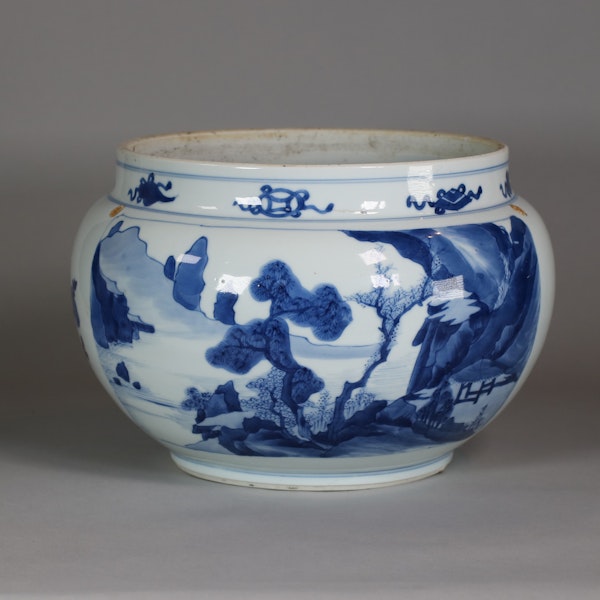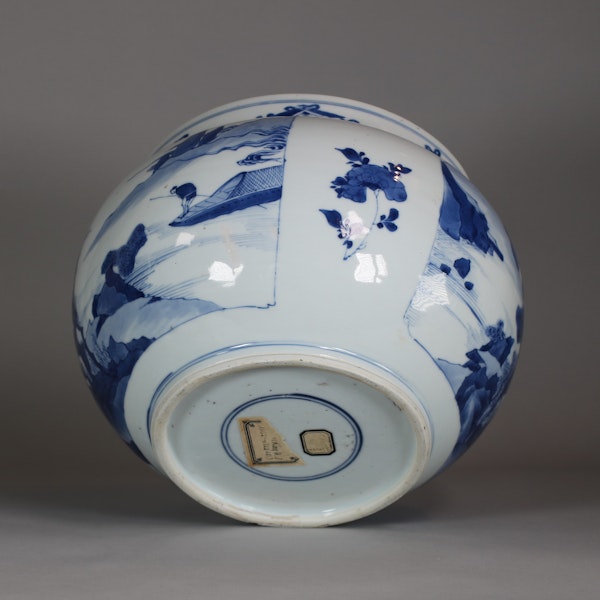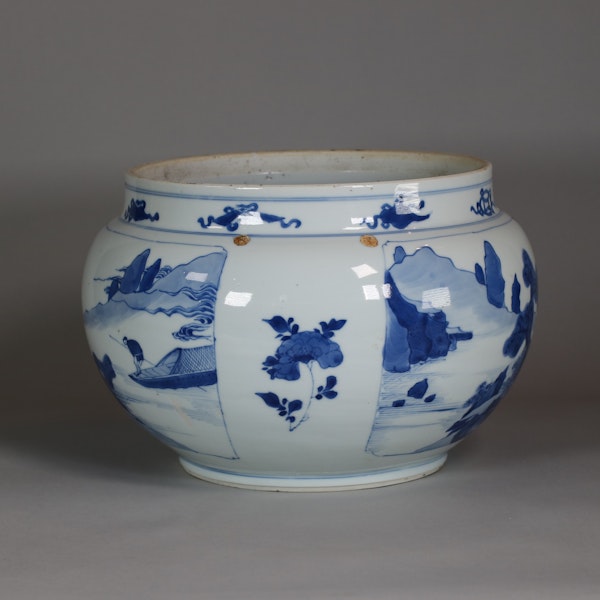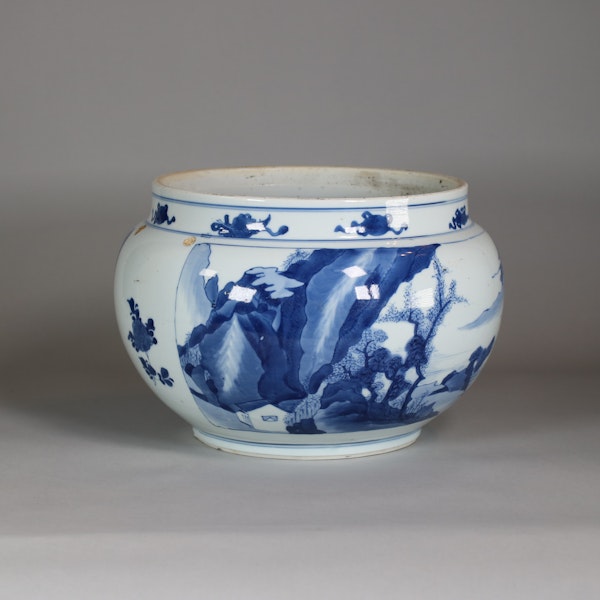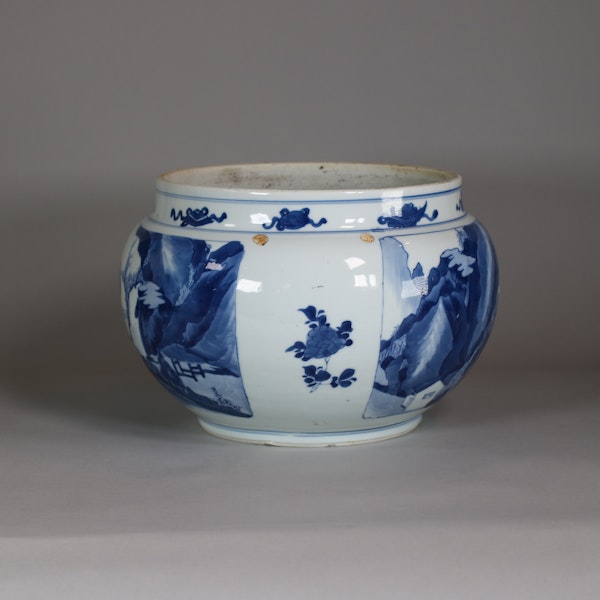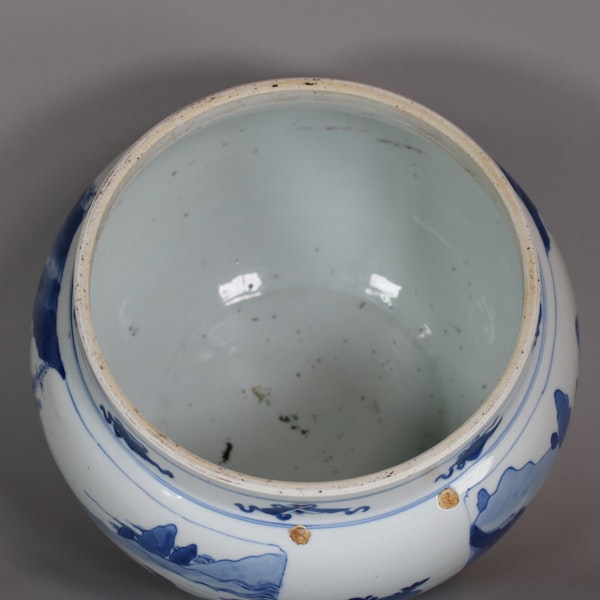Chinese blue and white ‘landscape’ censer/food vessel, Kangxi (1662-1722)
Chinese blue and white ‘landscape’ censer/food vessel, Kangxi (1662-1722)
POA
Description
Chinese blue and white ‘landscape’ censer/food vessel, Kangxi (1662-1722), of bombe form, the body decorated in a bright underglaze blue with two opposing chamfered panels containing river landscape scenes; one with pine and other trees on a mountainous shoreline with a small thatched pagoda, the other panel containing a fisherman on his boat underneath a towering cliff face, with a small hut, trees and swirling clouds; two sprays of peony between the panels, the rim with a band of eight beribboned precious babao within double blue lines, the base with double circle in underglaze blue
Height 16 cm (6 1/4in.); diameter at the rim:19 cm. (7 1/2in.)
Condition: Small fault to footrim and sides originally drilled to hold metal handles
Notes:
Representations of an idealised seclusion within the landscape became particularly popular in China from the Yuan dynasty onwards. Barred from involvement with the Mongol government, many educated Chinese retreated to the mountains and sought self-cultivation and artistic inspiration there, with the ideal of the artist’s deep personal relationship with the surrounding space becoming a key feature of literati culture and consequent representations of landscape in Chinese art. Such landscape scenes, which often contain rustic houses and country-dwelling folk such as fishermen to emphasise the simplicity of life amongst nature, also became popular within Kangxi ceramic design. During the upheaval of the Ming and early Qing, the notions of traditional value and stability associated with the ancient scholars offered a connection to an idealised past. Encouraged by the Kangxi Emperor’s own personal dedication to literati pursuits, collectors valued wares that embodied the scholarly aesthetic and demonstrated their elevated intellectual and social status.
| item details | |
|---|---|
| Material and Technique | porcelain with underglaze cobalt blue decoration |
| Origin | Chinese |
| Period | 18th Century |
| Condition | Very good |
Product REF: W700
